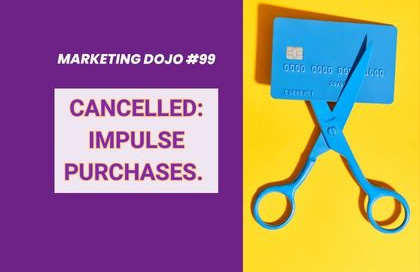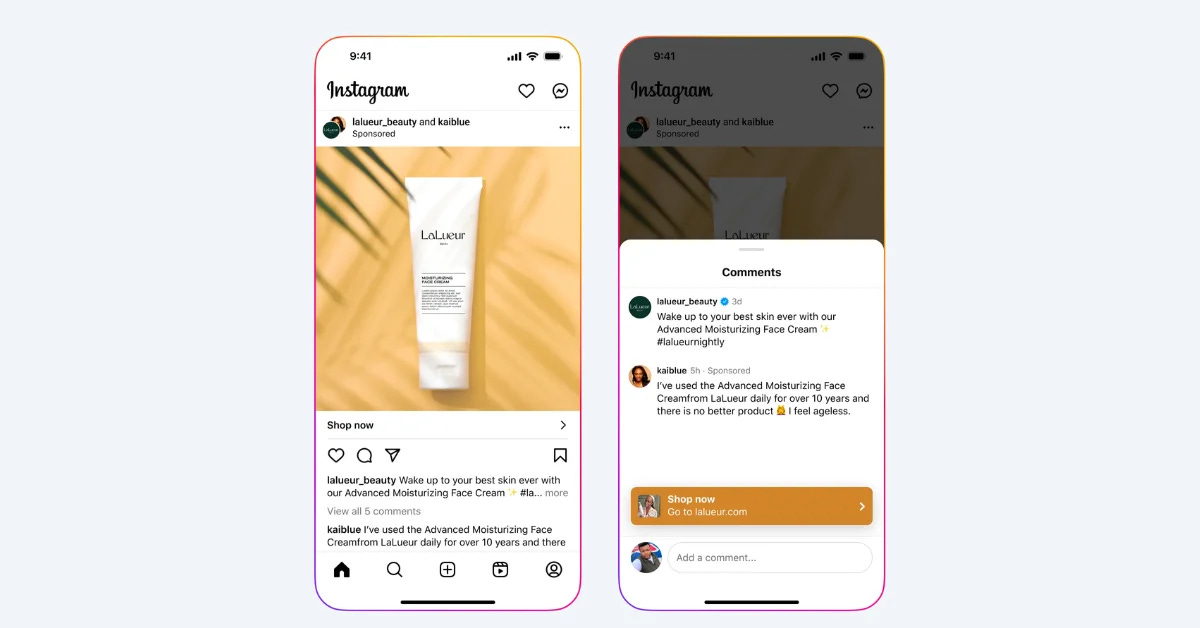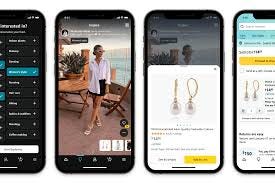Marketing Dojo #99: 🙅♂️Impulse Buys: Cancelled?⛔
The downward trend with impulse purchases, Instagram's monetized social proof & Amazon's FlopTok.
Honest confession: I'm not ready to say goodbye to February yet.
As the month races to a close, I'm watching my January resolutions fade faster than a TikTok trend. But I've found a loophole: The Mongolian New Year is March 1st. So, in deference to Mongolian traditions (which I didn't just Google), I am gunning for a fresh start.
Anyway, on a more serious note, here's all the marketing goodness waiting for you today
🛒 Impulse purchase. In this economy?
🖊️ Creative excellence: BIC's 75th birthday
💰 Monetized social proof
🚫 Amazon cannot TikTok
And More.
Impulse Buying Sneezes, Social Commerce Catches a Cold.
Rising inflation, job cuts, and economic uncertainty have hit hard. It's no surprise that consumer sentiment has taken a dive.
Euromonitor's latest research confirms what we're all feeling—they call it the "Wiser Wallets" trend. In 2024, 57% of consumers extensively researched purchases, while only 18% made impulse buys. That number is expected to drop further in 2025.
Social commerce is one industry highly dependent on impulse purchases. 48% of social media users have impulsively bought an item they first saw on a social media feed, and 55% of TikTok Shop purchases are impulse buys, driven by trending videos or influencer endorsements.
So here's where things get interesting. While the impulse buying market shrinks, every major platform - TikTok Shop, YouTube, Instagram - is aggressively expanding its social commerce offerings. But there's a catch: in 2025, social commerce isn't a growing pie - it's a zero-sum game.
The growth of a platform is going to come at the cost of the others. Most likely, it's going to be a brutal 2025 where the most aggressive platform will take it all.
We're looking at a brutal winner-takes-all scenario. Growth for one platform means decline for another. The most aggressive player might just walk away with everything in this high-stakes game.
Social Proof, But Make It Sponsored.
Remember the last time you hesitated before hitting "buy" on a social media ad? You're not alone. That moment of doubt, that pause before purchase - marketers call it the "cost of hesitation," and it's eating into sales across platforms.
Last week, Instagram introduced a new ad format to ease those doubts: creator-endorsed comments. Brands can feature influencer testimonials—short, 125-character endorsements—directly in the ad's comment section. These appear as "Sponsored" comments, with the creator's partnership clearly labelled in the post header.
Gen Z already trusts influencers more than experts. These partnership ads give brands instant social proof and creators an easy way to cash in—a win-win for credibility—and conversions.
AI, a Robot, and Shakespeare Walk Into a Bar… and Borrow a BIC.
Imagine a 75-year-old who's both utterly dependable and surprisingly tech-savvy. That's essentially what BIC Brazil channelled in their clever anniversary celebration for the iconic Cristal pen.
Their project, "One BIC, One Book, Two Classics", combines heritage and innovation in one stroke. Here's what they did: They employed AI to analyze and recreate Shakespeare's actual handwriting, testing over 20 versions until they found one that captured the Bard's style.
Then came the practical demonstration – a robotic arm equipped with a single BIC Cristal Dura+ pen rewrote the entire "Romeo and Juliet" manuscript. This mechanical setup worked for 63 hours spread across 20 days, all with just one pen.
A legacy brand v/s a futuristic twist. Many brands struggle to balance heritage with innovation—BIC nailed it. This campaign seamlessly ties technology, AI, and storytelling with the pen's core USP: durability.
Who knew a 75-years could be this cool?
Amazon’s FlopTok Shutters.
Amazon's attempt to "do a TikTok" just crashed and burned.
Amazon has officially shut down Inspire, its TikTok-style shopping feed. The feature was meant to drive product discovery through influencer and brand-created content. But it never truly took off.
Amazon is a utility-driven platform. Its strength lies in convenience—vast selection, fast search, and one-click checkout. On the other hand, social commerce thrives on entertainment-first engagement—users scroll for fun, and shopping happens along the way.
Then there was the lack of understanding of the creator economy. The company offered compensation that was perceived as too low, with influencers typically earning much more on other platforms. When influencers can earn significantly more on other platforms, why create content for Amazon?
Instead of forcing social onto its platform, it's taking its catalogue to where the audiences already are. Recent integrations with Meta, Snapchat, and Pinterest enable seamless Amazon shopping within those ecosystems.
RIP Amazon Inspire. It was a failed TikTok copycat, but the company's pivot toward strategic partnerships might be the smarter move in this high-stakes social commerce race.
Short Stuff:
X is gaining advertisers on its platforms (Nothing political about it).
TikTok launched an innovative automotive ad format, close to the heels of Amazon's launch of Amazon Auto.
TikTok Shop sales grew 153% in January 2025 compared with 26% for Shein and 28% for Temu. (Chinese-origin online budget retailers are set on a collision course).
That’s a wrap on this week. Thank you for your time and attention. If you liked this week’s newsletter or found something interesting, please give me a like ❤️ or drop a comment🗨️. Your support helps drive the newsletter's discoverability.
I will see you in your inbox next Wednesday.
Regards,






